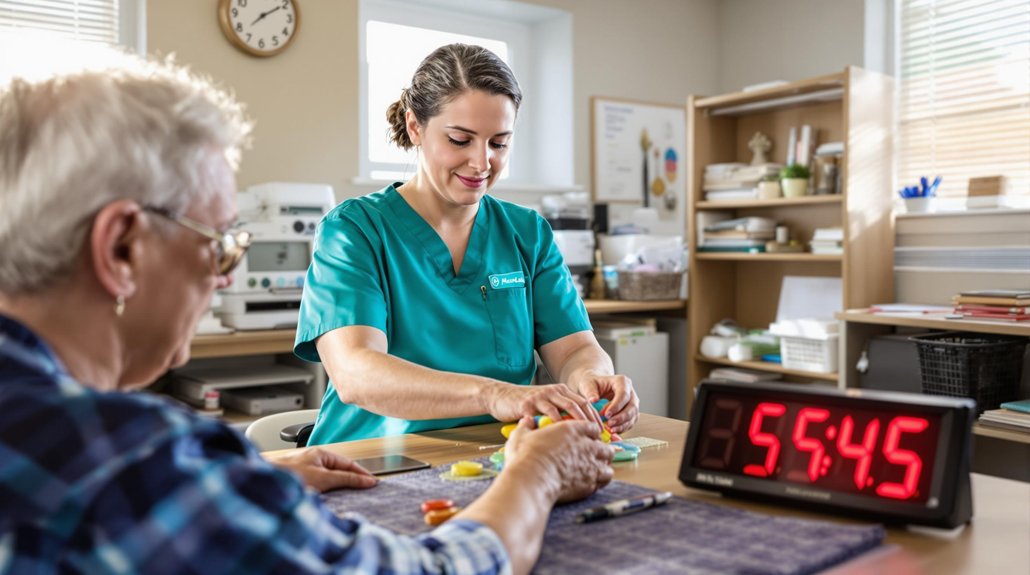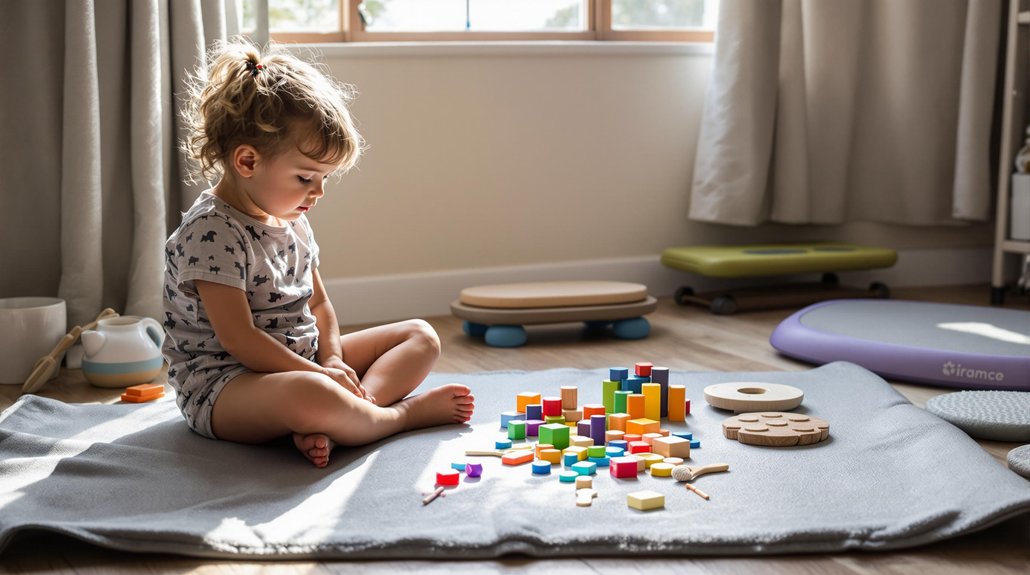Yes, you can receive effective occupational therapy services in your home environment, which often provides better results than clinical settings. Your therapist will work with you using familiar items and spaces to help improve daily living skills and independence. You’ll get personalized treatment for conditions like stroke recovery, arthritis, or developmental delays, while family members can actively participate in your care. Discover how home-based OT can transform your recovery journey.
Benefits of Home-Based Occupational Therapy
When occupational therapy takes place in your home environment, it offers several unique advantages over clinic-based sessions.
You’ll receive personalized interventions that directly address your daily living challenges within your actual living space. Your therapist can assess how you maneuver through your home, use your furniture, and interact with household items, leading to more practical solutions.
Home-based therapy provides increased accessibility, especially if you have mobility issues or transportation barriers. You won’t need to worry about commuting to appointments or managing unfamiliar clinic settings.
Home therapy eliminates travel stress and accessibility hurdles, letting you focus on healing rather than logistics of getting to appointments.
Your family members can easily participate in sessions, learning how to support your progress and implement therapeutic strategies. Additionally, you’ll practice new skills in the exact environment where you’ll use them, making it easier to build confidence and maintain independence in your daily routines.
Focus Family Care’s certified occupational therapists provide comprehensive evaluations to develop customized care plans focused on your health, comfort, and safety.
Common Conditions Treated Through At-Home OT
At-home occupational therapy effectively treats a wide range of physical, cognitive, and developmental conditions.
You’ll find OT particularly beneficial for stroke recovery, helping patients relearn daily activities and regain independence in their familiar environment. Children with sensory integration challenges can receive specialized therapy using their own toys and spaces.
Common conditions that respond well to home-based OT include arthritis, multiple sclerosis, developmental delays, autism spectrum disorders, and injuries from accidents.
You can also address age-related challenges like balance issues and cognitive decline through personalized interventions. If you’re recovering from surgery or managing a chronic condition like Parkinson’s disease, at-home OT provides targeted exercises and adaptive strategies to help you navigate daily tasks within your own living space.
Fall prevention training and home safety assessments are essential components of comprehensive occupational therapy care.
Essential Equipment and Tools for Home Therapy
To successfully conduct occupational therapy at home, you’ll need a core set of versatile equipment and therapeutic tools. Basic therapy supplies include exercise bands, stress balls, putty, and foam blocks for strengthening and dexterity.
You’ll also want to stock up on fine motor tools like writing aids, specialized scissors, and grip attachments. Consider investing in adaptive tools that match your specific therapeutic goals. These might include button hooks, long-handled reachers, sock aids, or specialized eating utensils.
For balance and coordination exercises, gather items like balance boards, therapy balls, and non-slip mats. Keep measuring tools handy, such as goniometers and grip strength assessors, to track progress.
Remember to organize your supplies in an easily accessible area where you’ll conduct therapy sessions regularly.
Physical therapy services can be conveniently provided at home, eliminating the need to travel to appointments while ensuring professional rehabilitation support.
The Role of Family Members in Home-Based OT
Family members play three essential roles in home-based occupational therapy: primary caregiver, therapy supporter, and progress monitor.
As the primary caregiver, you’ll assist with daily activities, guarantee safety, and help implement therapeutic routines. Your family involvement directly impacts the success of the treatment plan. You’ll need to learn specific techniques from the OT to properly support your loved one’s therapy goals.
In the therapy supporter role, you’ll reinforce exercises, provide encouragement, and maintain a positive environment. This consistent caregiver support helps maintain motivation between OT sessions.
As a progress monitor, you’ll track improvements, note challenges, and communicate changes to the occupational therapist. Your observations are invaluable because you witness day-to-day progress and can report subtle changes that mightn’t be apparent during therapy sessions.
Recovery care services can provide additional support through specialized caregivers who assist with rehabilitation and physical therapy exercises at home.
What to Expect During In-Home OT Sessions
In-home occupational therapy sessions typically last 45-60 minutes and follow a structured yet flexible format.
During your first visit, your OT will conduct detailed in-home assessments to understand your living space, daily routines, and specific challenges. They’ll observe how you perform everyday tasks and identify potential safety hazards.
Together, you’ll develop personalized goals focused on improving your independence and quality of life. Your OT will then guide you through therapeutic exercises, demonstrate adaptive techniques, and recommend helpful modifications to your environment.
They’ll also teach you strategies to conserve energy and prevent injury while performing daily activities.
Each subsequent session will build upon your progress, with your therapist adjusting interventions based on your needs and documenting improvements toward achieving your established goals.
Your occupational therapist can coordinate with private duty nursing services to ensure comprehensive care and support for your recovery at home.
Comparing Home vs. Clinical OT Settings
While both settings offer valuable therapeutic benefits, occupational therapy delivered at home provides distinct advantages over clinical environments.
Home therapy allows you to practice essential daily activities in your natural setting, making it easier to develop practical solutions for real-life challenges. You’ll work with familiar objects and navigate your actual living space, leading to more relevant and sustainable improvements.
Clinical therapy offers access to specialized equipment and controlled environments, which can be beneficial for specific treatments. However, you’ll need to transfer those skills to your home environment later.
With home therapy, your therapist can directly observe your living situation, identify potential hazards, and recommend immediate modifications. They can also involve family members more effectively, ensuring better support and understanding of your therapy goals.
Conclusion
Home-based occupational therapy can open up amazing possibilities for healing and growth right where you live. Your home can become a comfortable place to work on your recovery, with your familiar surroundings helping you feel safe and confident. Just like a garden needs the right care to bloom, you too can flourish at home with proper guidance from skilled therapists who understand your needs.
Whether you’re working to regain strength after an injury or learning new ways to handle daily tasks, remember that healing takes time – and you don’t have to do it alone. At Focus Family Care, we’re here to walk beside you every step of the way, bringing professional care right to your doorstep.
If you or a loved one need help, don’t wait. Reach out to Focus Family Care today at (561) 693-1311 or email us at info@focusfamilycare.com.





